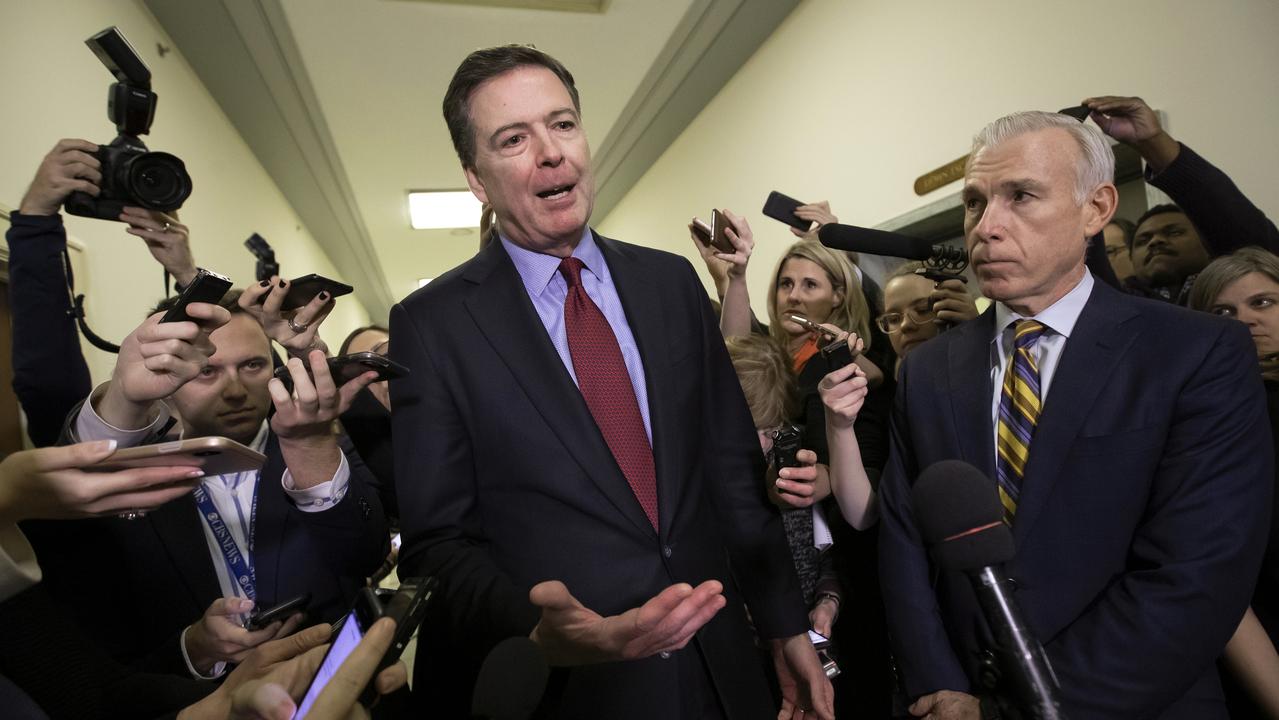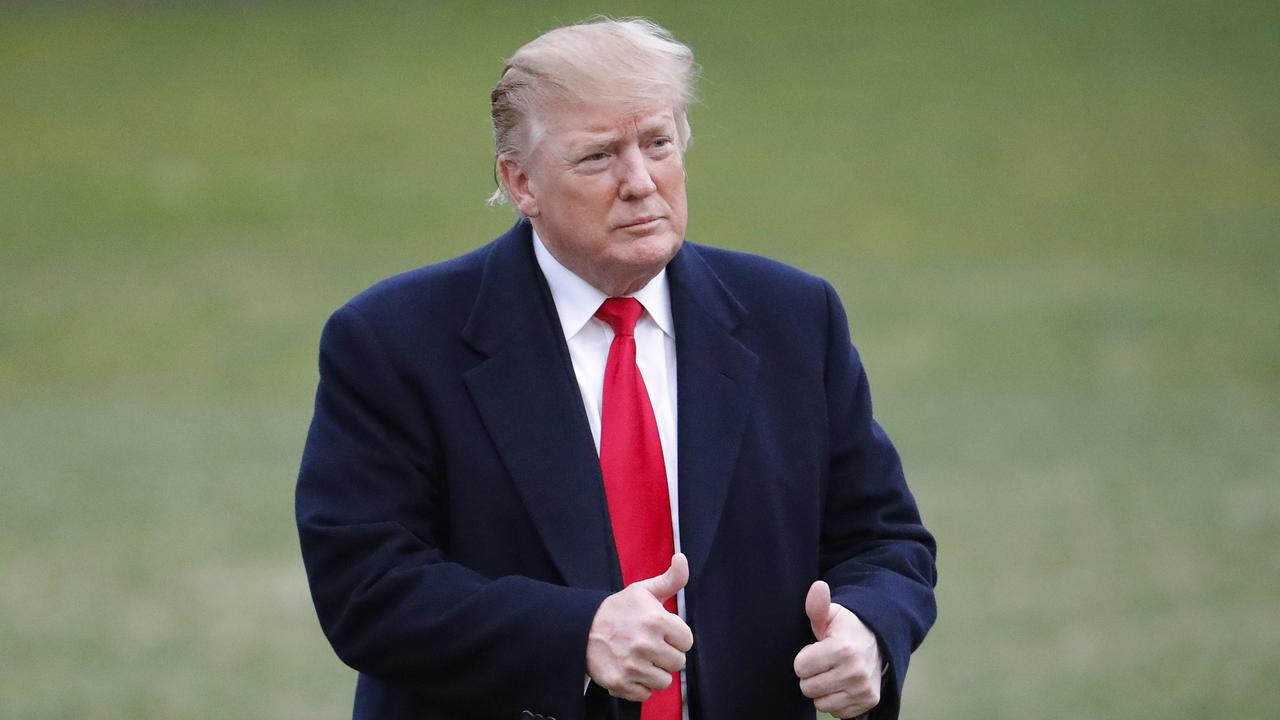When political spin lost touch with reality
TREASURY chief Ken Henry is right to say the budget strategy has a communications problem; the real problem, however, is not his pre-emptive fiscal stimulus but the political spin nursed by the Rudd Government to the point of addiction. This Government's communications problem can be summarised in one question: does anybody believe that a Prime Minister and Treasurer too frightened to announce the deficit and debt numbers on television have the fortitude to wage a six-year-long campaign that keeps growth in government spending to below 2 per cent in real terms to achieve a budget surplus by 2015-16?
The answer is obvious. This is Kevin Rudd and Wayne Swan's real problem. Keen to promote themselves as decisive leaders during an economic crisis, this week they looked scared, silly and subservient to political spin. Until sanity prevailed at week's end, Australia had a Prime Minister and Treasurer who refused to answer questions about their core budget numbers with the directness of a primary school student. Their instinct was to avoid putting the words "dollars" and "billions" around the $57.6 billion deficit or projected $188 billion net debt.
This is the point where political spin lost touch with reality. It offers the insight that there are Rudd government tacticians who actually believe this is smart politics. It means, you see, Rudd and Swan weren't delivering a damaging media grab to be recycled. But it also sent another message: that the Rudd Government cannot look Australians in the eye and speak the truth.
What is extraordinary is that this tactic continued into a second week after criticism of Swan for omitting the deficit figure from his budget speech. The evasions this week left the impression of a Government desperate to hide something. The effect was only to reinforce attention on the size of the deficit and debt. The tactic reeks of the corrupted culture of NSW Labor, where spin is used endlessly to try to conceal the economic mire into which Australia's largest state has sunk. This mentality seems embedded in the Rudd Government's culture and it is a potentially terminal disease.
Rudd and Swan are better than this and they need to rise above it: this should become a test of their political character. They don't seem to comprehend the doubts fermenting about their Government in boardrooms across the nation (despite deep gratitude for the fiscal stimulus) and that this behaviour only further undermined their credentials.
This brings us to the communications problem to which Henry did refer: the ambivalent nature of a budget dominated both by a pre-emptive stimulus strategy and the need to project a return-to-surplus pathway.
The doubts about this budget focus on the Government, not the Treasury. Henry is a professional public service leader who has admirably served the Hawke, Keating and Rudd governments. The wimps who think the Treasury secretary is crossing the boundaries when he has a shot at a few critics can be dismissed. Australia doesn't have wimps as Treasury secretary: witness Fred Wheeler, John Stone, Bernie Fraser, Tony Cole, Ted Evans and Henry.
The real story of the past eight months is how Henry advised Rudd to go hard on the huge fiscal stimulus but locked the Prime Minister into the punitive consequence of a 2 per cent spending straitjacket in the recovery phase. This is the "stimulus and sustainability" nexus at the budget's heart. The question is whether the Rudd Government has the mettle to honour this economic compact from Treasury.
This budget highlights the great messages from the past 20 years, the 1990s recession and recovery. Treasury knows three mistakes were made. First, in the early '90s recession the fiscal stimulus came disastrously late (partly because Paul Keating was on the backbench).
Henry was determined that Australia not repeat the same mistake.
Second, the '90s return-to-surplus pathway was compromised and lacked credibility (partly due to the L-A-W tax cuts), which meant John Howard had to do the job post-1996 of getting the budget back to surplus.
In his speech this week Henry said it was wrong to claim this budget's projected surplus could be achieved only with unprecedented discipline from the Rudd Government. On the contrary, Henry argued, the surplus can be regained if the Rudd Government has the same spending discipline as the Hawke government over the seven years from 1982-83 or, taking another example, if it has the same discipline as the latter Keating and early Howard years of the '90s.
In short, history suggests the task is achievable. Pointtaken.
Rudd's problem, however, is only amplified by Henry - it means everything depends on the Government's discipline, character and reformist courage. Does it possess the same fortitude as previous governments? This week's performance is not a recommendation.
The third mistake is the most electric because it is the most recent: after the 2002 terms-of-trade boom, Treasury misjudged the need for a firmer fiscal policy. This is the shadow that overhangs Howard's legacy and Rudd's future.
Interviewed by The Australian this week, former treasurer Peter Costello said of budget policy and Treasury advice during the boom: "The Treasury position was that a surplus of around 1 per cent of (gross domestic product) was enough. In fact, in every year from 2004 onwards I delivered substantially more than that. My policy was to deliver a stronger surplus that recommended by the Treasury.
"We had the strongest fiscal position in the world. The attack on me at the time was that it was outrageous to be building up such huge government war chests (surpluses). I was under pressure to cut taxes more because the surpluses were supposed to be too high. The Labor Party's attack was that I should be spending more on infrastructure. The Australian's attack was that I should have been cutting taxes more."
From 2003-04 to 2007-08 the budget surpluses as a proportion of GDP were 1 per cent, 1.5 per cent, 1.6 per cent, 1.6 per cent, and 1.7 per cent. Almost no other Organisation for Economic Co-operation and Development nation had this record.
Neither the Treasury nor the Reserve Bank of Australia was advising or agitating for higher surpluses. There was a major conflict between Howard and Costello over the prime minister's preference for spending and the treasurer's preference for tax cuts. But there was no serious conflict over the size of the surplus. And Treasury, with its optimistic view of the terms-of-trade trend, was not pressing for higher surpluses.
When Costello began thinking about his final budget, he got a Treasury minute of November 24, 2006, signed by Treasury's senior fiscal officer David Tune. It said under the Budget Strategy heading: "Maintaining a strong surplus of around 1 per cent of GDP in 2007-08 is prudent, given the economy is operating with limited spare capacity and the risks of increasing inflationary pressures from any large increase in spending.
"The strength in the budget position provides some latitude to make gradual structural adjustments to the budget over time, particularly as it looks likely that the Future Fund will not require much augmentation in later years to reach its target. Such adjustments ... could gradually draw down the surplus in the out-years to around a half per cent of GDP (or even a bit less) by 2009-10. Policy reform should focus on boosting the supply side of the economy."
The minute, marked "cabinet-in-confidence", advised that spending bids from ministers should be cut to ensure that spending as a proportion of GDP "would be maintained at around 21.4 per cent over the forward estimates".
This reveals Treasury's thinking: it felt that 1per cent of GDP was a strong surplus; it was not advising a higher surplus; it wanted to contain spending to a status quo result as a proportion of GDP; it endorsed Costello's tactic of returning part of the surplus via tax cuts; and it wanted to use the surplus to promote supply-side reforms.
Costello's informal policy of running surpluses at 1 per cent plus of the GDP reflected two beliefs: the figure was appropriate in economic terms and higher surpluses were untenable in political terms. Howard regarded any stockpiling of surpluses as absurd and unnecessary and did not receive advice to the contrary.
This strategy was challenged at the time by a very small number of economists, including the Australian National University's Ross Garnaut and Access Economics principal Chris Richardson. It was not contested by the Treasury or the Labor Party.
There is no gainsaying the Howard government wasted too much of the revenue proceeds of the boom. The failure to better utilise these surpluses remains a cost of unknown dimension now facing Australia. That dimension depends on what happens to the terms of trade or commodity prices in future.
In this week's speech Henry offered a critique of Howard government spending extravagance. He showed that in the seven years from 2000-01 real spending grew by a total of 25.7 per cent and this meant "putting aside the 1970s (the Whitlam period) there is no other growth cycle in the historical tables to the budget that shows such a rapid rate of growth in real government spending".
It is incredible that during this precise period there were academics running about accusing Howard of neo-liberalism and being uncaring of society, one of the worst calls in history. It is about par with the progressive Left fantasy that Howard presided over the demise of Australian egalitarianism. Henry points out that Howard's seven years from 2000 was a period of "spectacularly strong growth in nominal GDP and in budget revenues" and this was the platform for the strong growth in spending.
Costello is unrepentant. "I am very glad that I didn't run bigger surpluses," he told The Australian. "Because the Labor Party would just have spent them as well. The real Labor Party position is that I should have given them even bigger surpluses so that they could have spent them."
These budget papers contain a new Treasury analysis showing that under Costello the budget actually moved into a structural deficit in 2006-07. (Such calculations, significantly, use a different method from either the IMF or OECD.) Asked about this, Costello said: "This graph helps Kevin Rudd not one iota. It attempts to show in the last year of Coalition government there was a structural deficit of about 1 per cent of GDP. What it shows is that Rudd drove the budget into a massive structural deficit of 5 per cent of GDP. The current deficit is not a cyclical deficit but a deep structural deficit. In 2008-09 the Rudd Government increased spending by 13.5 per cent. It wants to say that, having been a shamelessly alcoholic in this budget, that it will go on the wagon later on."
What is the bottom line from all this? Rudd and Swan will soon confront a new politics of recession. At this point spin won't help them and the fiscal stimulus levers will be exhausted. They will confront protracted hardship during a long and agonising recovery. They will need to rediscover the Labor lesson from the '80s Hawke-Keating recovery: how to make economic adversity into a political plus by being champions of reform. And the spin merchants who practise to deceive should be shipped out before it is too late.


